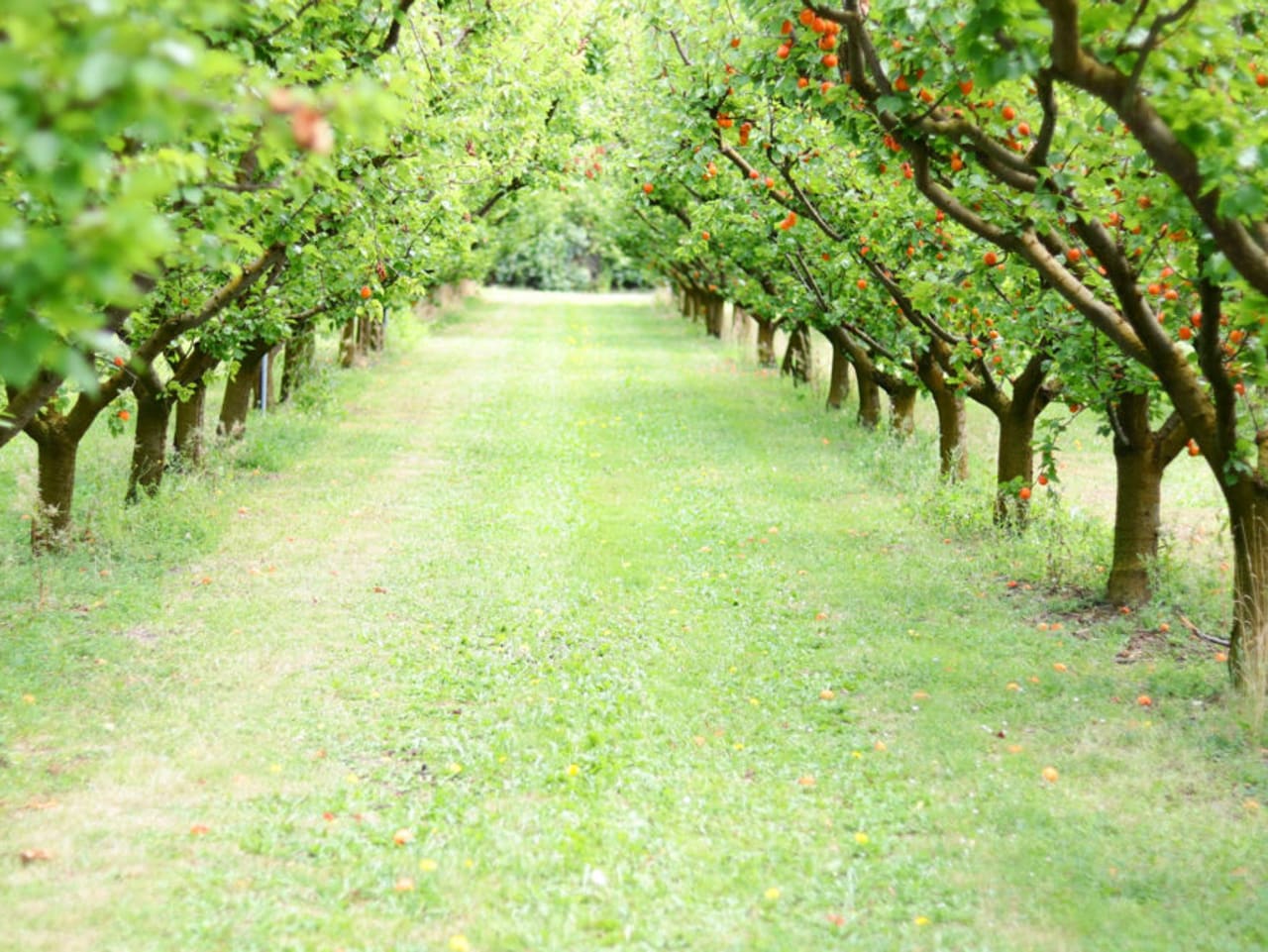The cultivation of apricots is an important part of Kecskemét's history.
Not only as fruit, but also as pálinka and jam. Nowadays, a tradition linked to this delicious fruit has been started. The town underwent enormous development at the end of the 19th century. It was characterized by large-scale vine and fruit production, of which the famous Kecskemét apricots were the most notable. Farmers exported them to markets and even to neighboring countries.
By the turn of the 20th century, Kecskemét had become the city of Art Nouveau and apricotes. Unfortunately, the native apricot is close to disappearing in the area, as its cultivation is very difficult for farmers, many of whom are switching to less frost-sensitive fruit or other crops.
In the spirit of tradition a few years ago native fruit trees, including apricots, were planted in the Centre of Kecskemét town, in front of the County Council building. In addition, apples and pears were planted in the park as well. The local “Garabó Community” considered it important that children living in the town get to know these fruit trees while walking around the Town Centre, as most of them only know these delicious delicacies from the shelves of shops.
Shortly after, as part of the Kecskemét Spring Festival, a new initiative was launched with the aim of preservation of the traditional Kecskemét-apricot trees. As part of the initiative The Kecskemét Town Planning Association joined Mihály Felföldi, a member of the family business Napország Gyümölcse, held the first apricot blossom festival in Matkópusta, in an apricot orchard.
“Today, farmers almost exclusively plant monoculture over a large area. In our family business in Kiskunfélegyháza, we have five hundred trees mixed together. This is a rarity nowadays,"
said Mihály Felföldi, recalling the genesis of the idea of the apricot blossom festival.
The size of the expected annual apricot crop in a given year is only known after the spring frosts. But it is always certain that the apricot trees will blossom in March. We would like to celebrate this every year in the future, similarly to the Japanese cherry blossom festival.
Ours is the apricot tree-planting ceremony, which attracted a good number of families for the first time," added Mihály Felföldi, who then went on to explain:
“Everyone who came out to the apricot orchard placed a strap on the tree of their choice. They wrote their name and contact details on it. When the fruit ripened, the farmer would call the family, who had the right to buy the apricotes first. In this way, a short supply chain can be created, and the apricots can reach the consumer in the shortest possible way. The apricot-panning scheme is a joint effort of the growers in Matkó and the surrounding area. Matkó is the only place in the region where there is a large and continuous native apricot orchard.





_4.jpg)

_4-1654093882.jpg)





